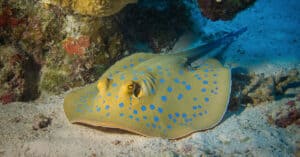Are you ready to dive into the enchanting world of baby stingrays? From their unique appearance to their surprising abilities, baby stingrays are truly remarkable creatures. So, get ready to be amazed as we discuss the irresistible charm of baby stingrays, including 10 amazing facts!
#1 – Baby Stingrays Are Called “Pups”
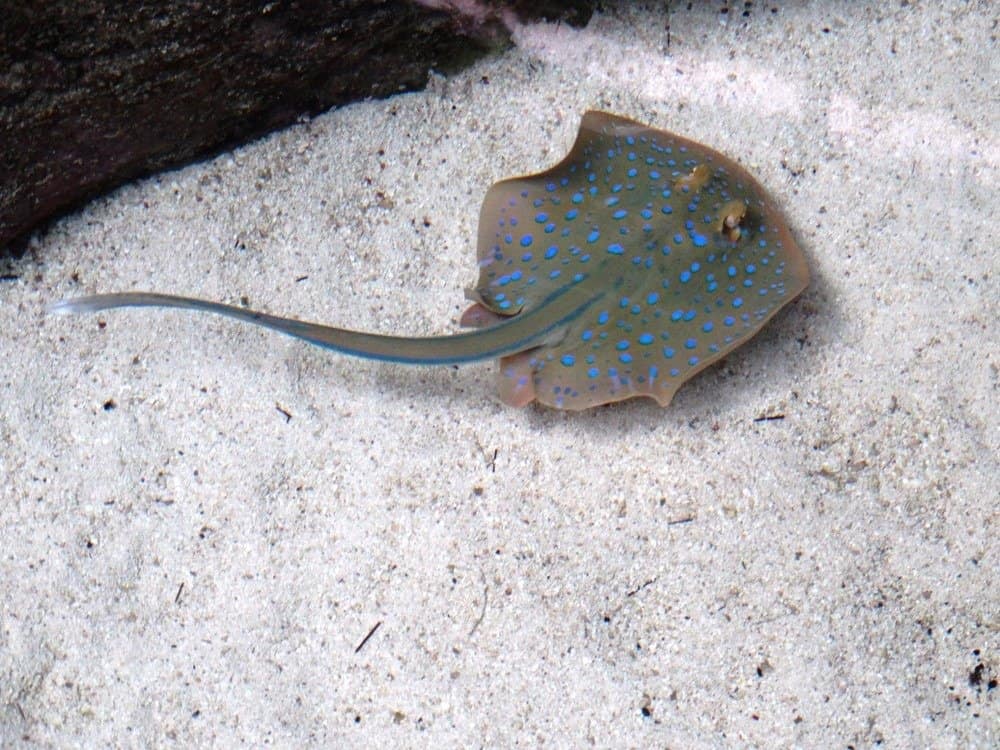
Unlike most other stingray babies, blue-spotted stingrays don’t bury themselves in the sand.
©Charles B. Cardell/Shutterstock.com
There are about 220 stingray species that we know of so far, classified in the suborder Myliobatoidei. Female stingrays give birth to litters ranging from five to 13 babies, which are called “pups”. Each baby stingray resembles a tiny replica of its parent, although much smaller and more delicate. Their bodies are flat and sleek. This allows them to glide through the water with ease as soon as they are born. Some have spots or stripes, while others flaunt solid color coats and blend seamlessly into the sand.
#2 – Stingrays Are Ovoviviparous and Bear Live Young
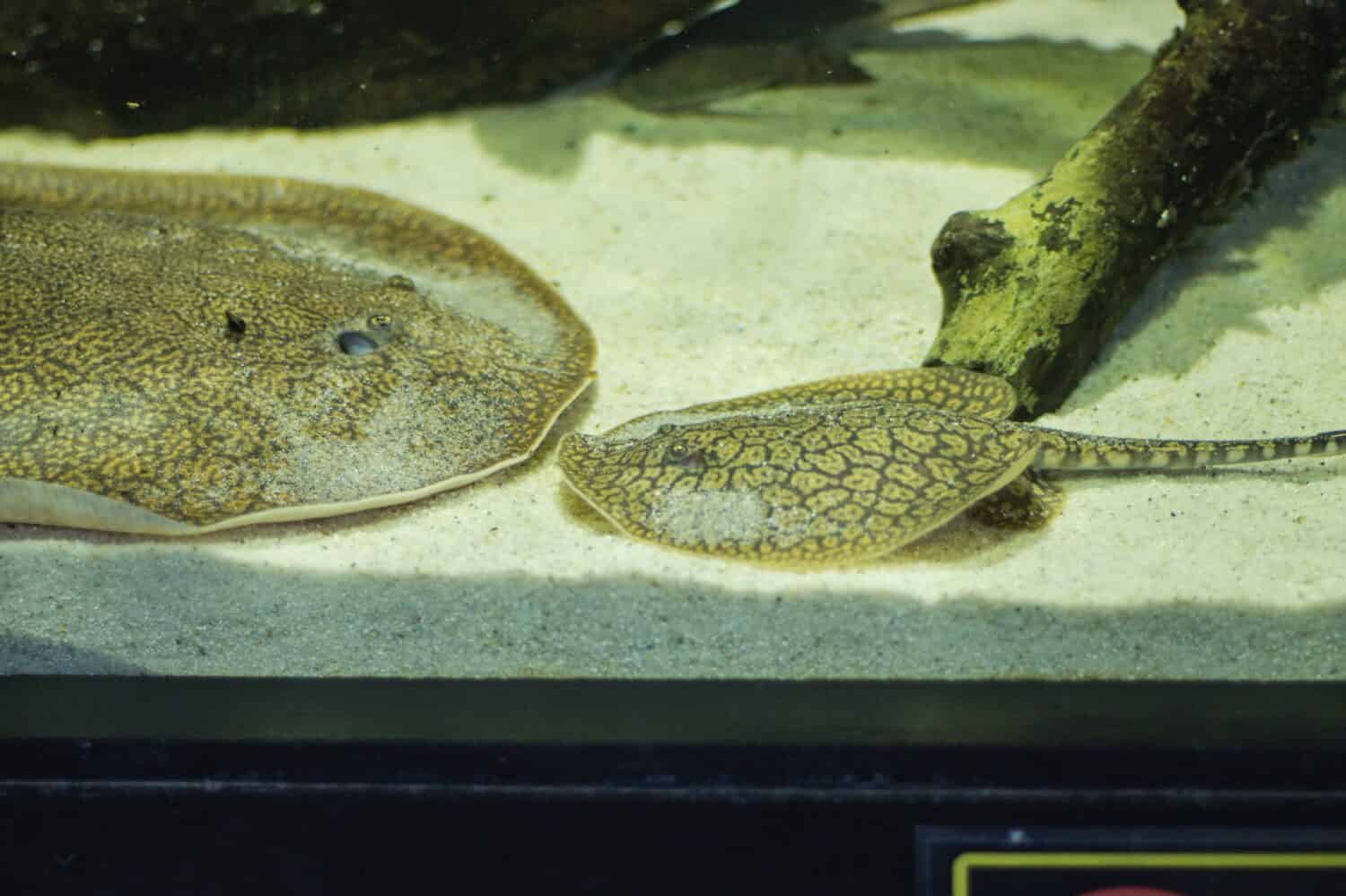
Only some species of stingrays stick around to care for their young.
©Tajaska/Shutterstock.com
Another rather unique characteristic of stingrays is that, unlike their other fishy neighbors who scatter their eggs into the water, female stingrays carry their precious cargo inside their own bodies. However, instead of a placenta, embryo stingrays draw their nutrients from a yolk sack. When the yolk sac is depleted, the mother creates a special type of uterine “milk” within her body. This continues to give her babies nutrients as they develop inside her womb. Safely inside the mother, stingray eggs develop and hatch, receiving nurturance from their mother’s bodies. When the time is right, stingray mothers give birth to live young, a process known as ovoviviparity.
#3 – Some People Call Baby Stingrays “Sea Ravioli”
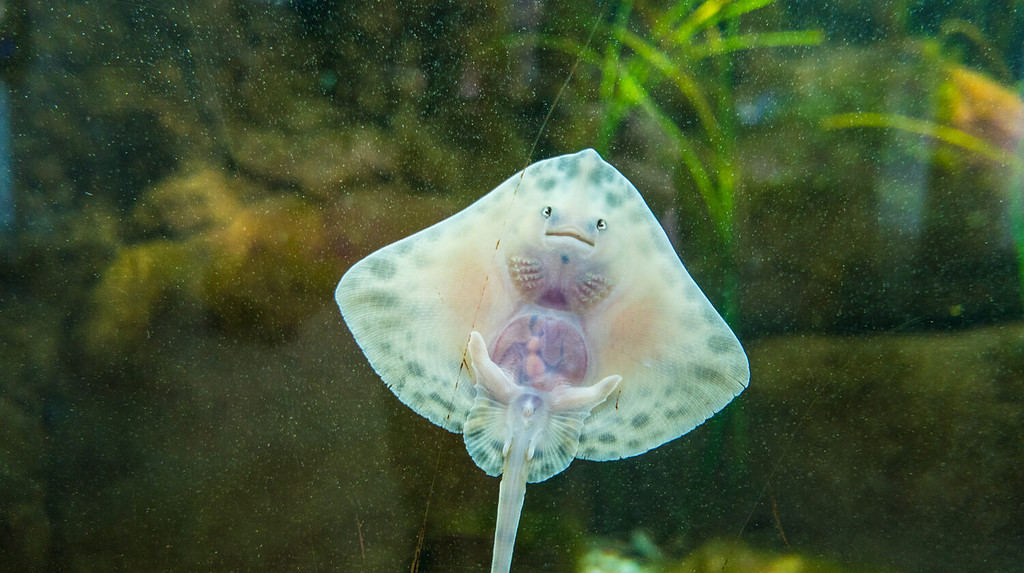
Some species of stingrays can grow up to 790 pounds!
©jamesclark1991/Shutterstock.com
Although they are officially called pups, the adorable little bodies of baby stingrays can often look a lot like a piece of ravioli pasta with eyeballs! Stingrays are a type of cartilaginous fish, meaning they don’t have any bones. Instead, their bodies are flat and expansive like an oceanic ray. In stark contrast to bony fish, the framework of cartilaginous fish like stingrays has flexible cartilage instead of bone.
#4 – Baby Stingrays Are Fully Developed When They Are Born
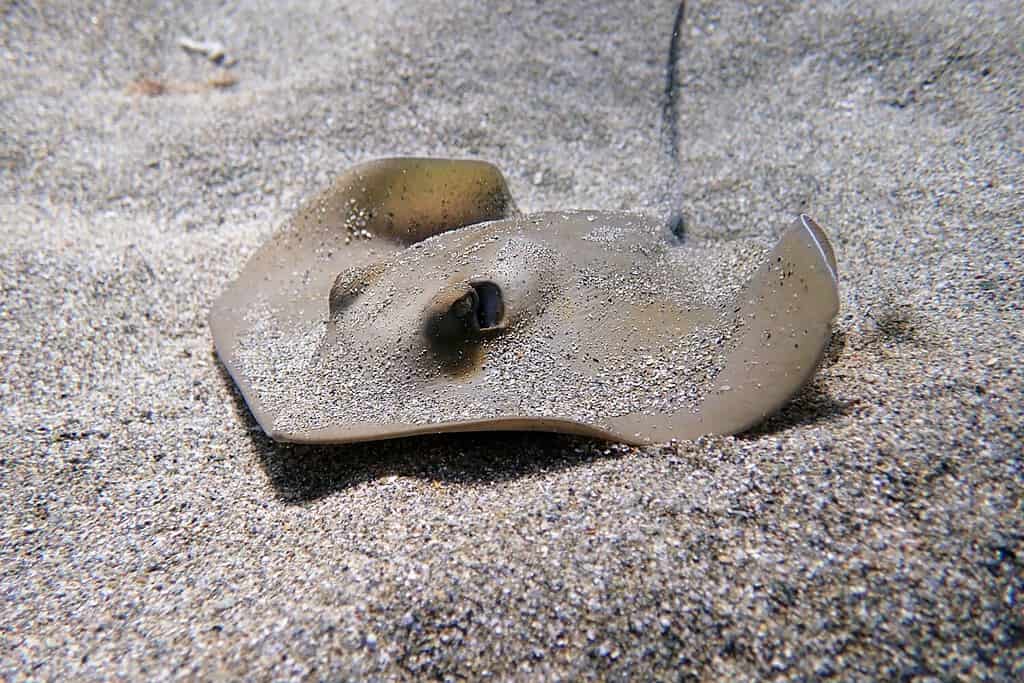
Newborn common Mediterranean stingrays are typically 3.1 inches across and 7.9 inches long.
©Vojce/Shutterstock.com
From the moment they are born, baby stingrays are remarkable creatures who are able to nourish and shield themselves against potential threats. They come into this world fully developed, with their stingers already in place. As soon as they are born, most baby stingrays will take the plunge into independence, venturing far off into the ocean away from their mother. However, in certain species, such as the giant freshwater stingray (Urogymnus polylepis), babies are not quite so quick to leave. Instead, stingray mothers display an extraordinary level of care until the babies are about one-third the size of an adult.
#5 – Baby Stingrays Swim by Flapping Their “Wings”
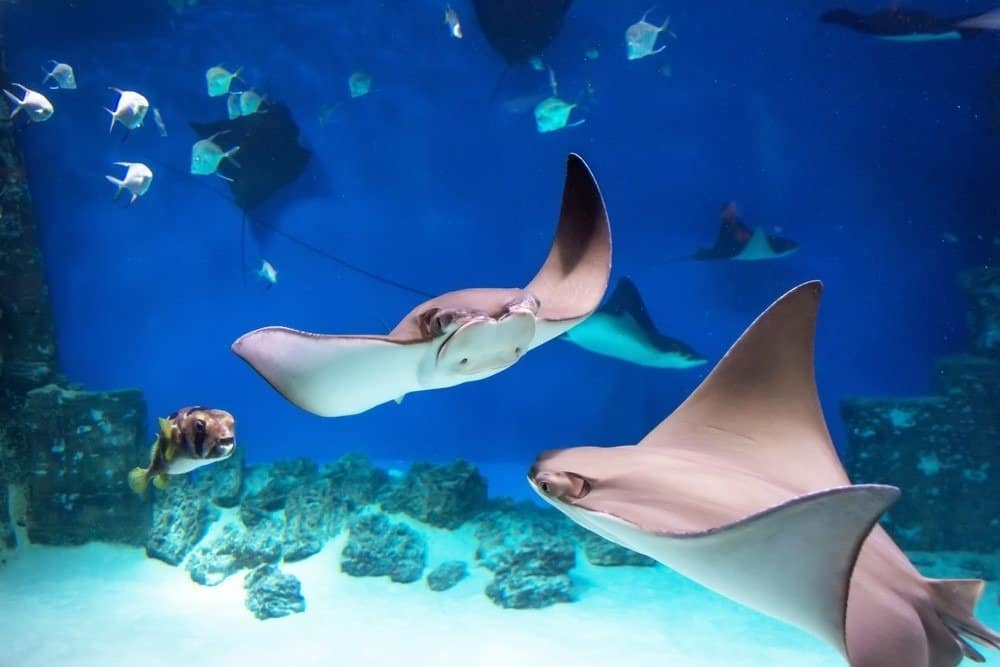
Stingray babies have ampullae of Lorenzini, electrical sensors that help them detect prey.
©aapsky/Shutterstock.com
Like adults, baby stingrays gracefully navigate through the water via the gentle flapping and undulating of their pectoral fins. While their tails provide additional assistance, their wing-like fins do most of the heavy lifting. However, baby stingrays are not as fast and agile as adults, which leaves them vulnerable to predators. To seek refuge, certain species stay close to their mothers until they grow larger.
#6 – Baby Stingrays Are Venomous
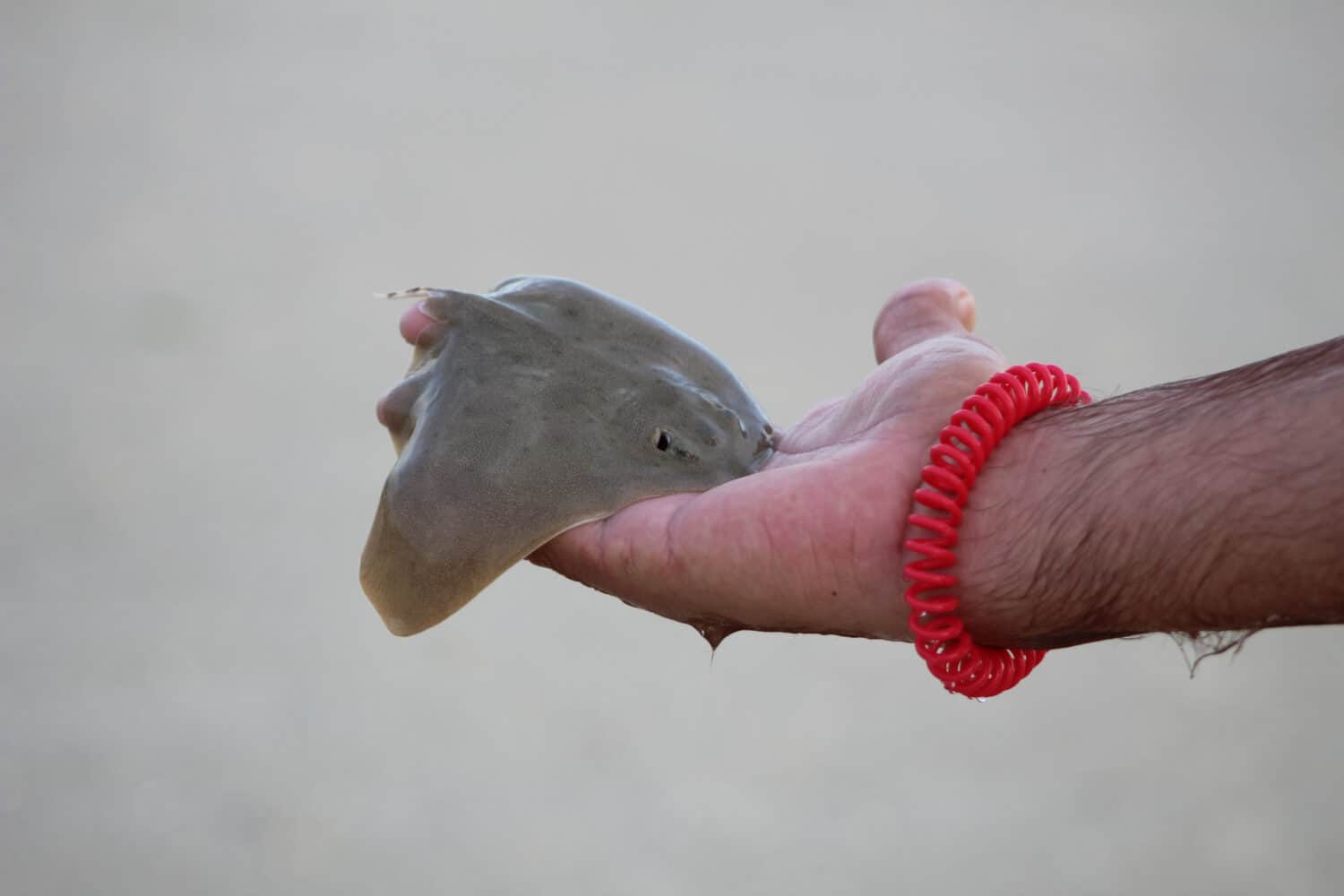
Even tiny stingrays can still sting!
©Amanda Champion/Shutterstock.com
From the moment they are born, baby stingrays have fully developed stingers or barbs along their long tails that produce venom. However, the sting of a baby stingray is typically less agonizing than that of an adult. The venom is also typically less likely to cause severe harm. Recent studies suggest that younger stingrays have less toxic venom than adults, which helps them chase away predators and protect themselves. As they mature, a stingray’s venom becomes more toxic with a necrotizing effect to help them with hunting. This venom, if injected into a human, can have dire consequences, even proving fatal in some rare cases. Fortunately, however, stingrays are typically peaceful, nonaggressive creatures.
#7 – Baby Stingrays Are About the Size of a Dinner Plate When They Are Born

Whiptail stingrays from the family
Dasyatidaehave longer tails than other stingray babies.
©Araya Gerabun/Shutterstock.com
Even though they are born ready to take on the world with fully developed bodies, baby stingrays are still much smaller than their adult counterparts. These adorable little creatures are typically about the size of a dinner plate, depending on the species. For example, one of the smallest stingray species, the Magdalena River stingray (Potamotrygon magdalenae), gives birth to babies that are just 5 to 6 inches wide. The giant freshwater stingray (Urogymnus polylepis), on the other hand, is the largest stingray species in the world and can grow up to 7.2 feet across! These colossal stingrays give birth to one to four pups, each of which is typically 12 inches wide.
#8 – Male Baby Stingrays Grow Faster, But Females Grow Bigger

Female stingrays are larger than males and tend to live longer.
©Ekaterina Kuzmenkova/Shutterstock.com
When it comes to stingrays, females mature much quicker than males. Within just a single year of their lives, for example, female round stingrays (Urotrygon rogersi) manage to achieve 58% of their full size. In comparison, male stingrays reach about 70% of their full size within the same time frame. Although males reach sexual maturity before females do, they only grow to around 9.84 inches wide, while females grow around 12.2 inches. In southern stingrays (Hypanus americanus), the difference is even more astounding. Female southern stingrays grow up to 59 inches wide, while males only grow up to 26 inches!
#9 – Baby Stingrays Hide in the Sand
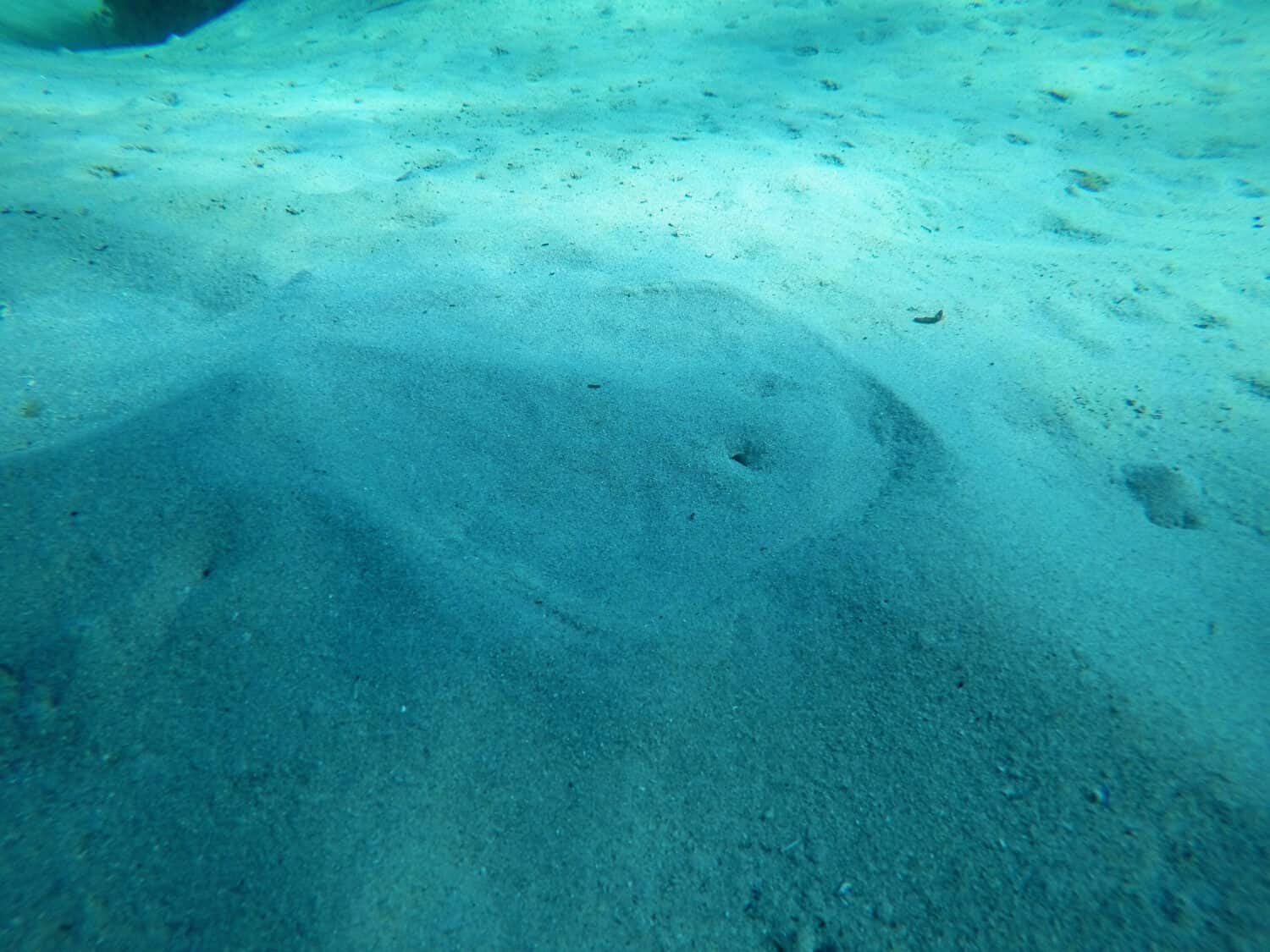
Stingray babies have eyes on top of their bodies so they can peek out of the sand while hiding.
©Monsterchic16/Shutterstock.com
Like adult stingrays, baby stingrays bury their graceful bodies under the sand, leaving only their defensive barb exposed. Sharp and formidable, this barb serves as a warning that the stingray is armed and ready, even when it’s resting. Unfortunately, this natural defense mechanism can pose a challenge when humans venture into the water, however. Unaware of these hidden dangers lurking beneath the sand, beachgoers may unintentionally disturb a hidden stingray, leading to potentially harmful encounters. This is why many people employ a technique called the “stingray shuffle”. Essentially, if you are at the beach, instead of stepping through the sand underwater as you normally might, you shuffle your feet to alert any buried stingrays of your presence.
#10 – There Are Over 200 Species of Baby Stingrays, and Many Are Endangered

Stingrays are frequently the unintentional victims caught up in fishing nets.
©nnk/Shutterstock.com
With their elegant wings, captivating poise, and adorable ravioli bodies, over 200 species of baby stingrays live in every ocean on the planet, except for the bitter regions of the Arctic and Antarctic oceans. Some are round while others have pointed fins that look like wings. In addition, while many species have muted colors like brown and gray, others can sport bright colors and unique patterns, like the blue spotted stingray (Taeniura lymma).
According to the International Union for Conservation of Nature (IUCN), at least 45 stingray species have been classified as vulnerable or endangered as of 2013. Stingrays face numerous threats, including habitat loss, overfishing, and climate change. Overfishing, in particular, is especially treacherous for these incredible animals. This is especially threatening to baby stingrays. When pregnant female stingrays are caught by fishermen, it often causes them to give birth too early or even have a miscarriage.
FAQS (Frequently Asked Questions)
Baby stingrays are called pups.
Baby stingrays eat many of the same things that adult stingrays eat, although typically just smaller creatures, like snails, shrimp, small fish, worms, clams, and squid.
Baby stingrays live in oceans all over the world, except for in the Arctic and Antarctic. Most species prefer shallow, warmer water with sandy or muddy bottoms.
The photo featured at the top of this post is © Andreas Polz/Shutterstock.com
Thank you for reading! Have some feedback for us? Contact the AZ Animals editorial team.




